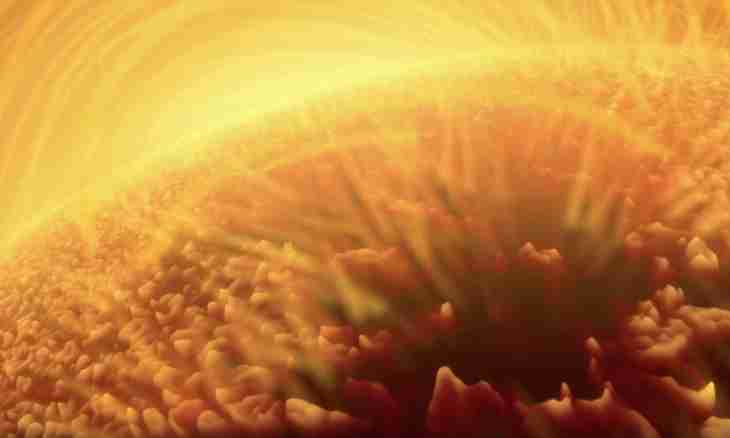The huge shining sphere called the Sun still conceals a set of riddles. Any of the devices created by the person is not capable to reach his surface. Therefore all information on the closest to us to a star is obtained by observations from Earth and Earth orbit. Only on the basis of open physical laws, calculations and computer modeling the scientists defined what the Sun consists of.
Chemical composition of the Sun
The spectral analysis of sunshine showed that most of all in our star of hydrogen (73% of the mass of a star) and helium (25%). Only 2% are the share of other elements (iron, oxygen, nickel, nitrogen, silicon, sulfur, carbon, magnesium, neon, chrome, calcium, sodium). All substances found in the Sun are both on Earth, and on other planets that speaks about their uniform origin. The average density of substance of the Sun — 1.4 g/cm3.
As study the Sun
The sun is "matryoshka" with a set of the layers having different structure and density, in them there take place different processes. In a range habitual to a human eye the observation of a star is impossible, however the spectroscopes, telescopes, radio telescopes and other devices fixing ultra-violet, infrared, x-ray radiations of the Sun are created now. From Earth the most effective is observation during a solar eclipse. During this short period the astronomers around the world study the crown, prominences, the chromosphere and various phenomena occurring on the only star, available to such detailed study.
Structure of the SunCrown — an outer sheath of the Sun. It has very low density, because of it it it is visible only during an eclipse. Thickness of the external atmosphere is uneven therefore from time to time in it holes appear. Through these holes in space with a speed of 300 — 1200 m/s the solar wind - a powerful stream of energy which on the earth becomes the reason of the northern lights and magnetic storms directs.The chromosphere — the layer of gases reaching thickness of 16 thousand km. In it there is a convection of the heated gases which, coming off a surface of the lower layer (photosphere), fall back again. They "burn" a crown and form streams of solar wind up to 150 thousand km long.The photosphere is a dense opaque layer 500 — 1,500 km thick in which there are strongest fiery storms with a diameter up to 1 thousand km. Photosphere gas temperature — 6,000 wasps. They absorb energy from an underlying layer and mark out it in the form of heat and light. The structure of the photosphere reminds granules. Gaps in a layer are perceived as spots in the Sun.Convective zone 125 — 200 thousand km thick — a solar cover in which gases constantly exchange energy with a radiation zone, heating up, rise to the photosphere and, being cooled, again go down after a new portion of energy.The radiation zone has thickness of 500 thousand km and very high density. Here substance is exposed to bombing by gamma-rays which will be transformed to less radioactive ultra-violet (UV) and x-ray (X) beams.Bark, or kernel — solar "copper" where constantly occur a proton - proton thermonuclear reactions thanks to which the star also receives energy. Atoms of hydrogen turn into helium at a temperature of 14 x 10 in the 6th degree of wasps. Here titanic pressure — one trillion kg on everyone cubic see. Every second here 4.26 million tons of hydrogen turn into helium.

